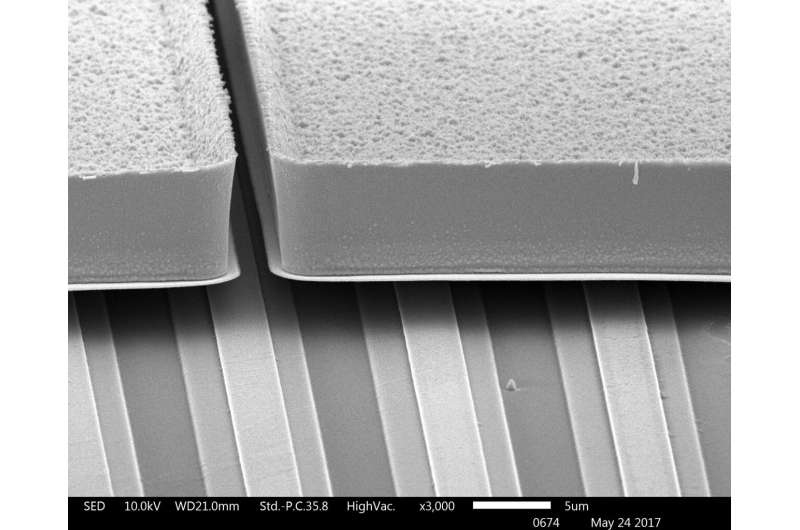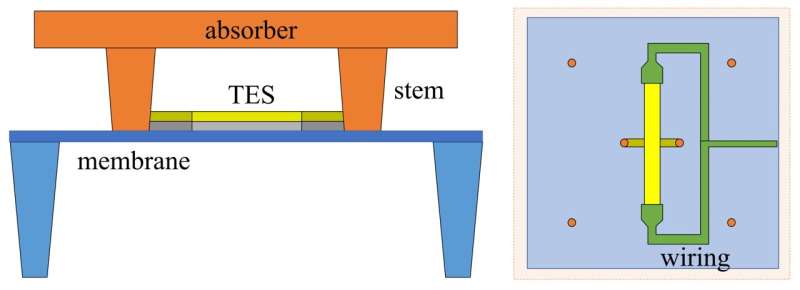Breaking the supposed accuracy limit for TES detectors

Scientists at SRON Netherlands Institute for Space Research are developing a detection technique (TES) that measures the energy of individual photons, for example in X-rays from the distant universe. Until now, it was assumed that the wiring on the detector chip brings along an inherent whimsicality in accuracy. The research team has now discovered that there is room for improvement after all. They have published their report in Physical Review Applied.
X-rays offer us a view of the high-energetic phenomena in the Universe. Hot gas inside clusters of hundreds of galaxies, active black holes, supernovae and binary neutron stars are just a few examples. But to enjoy the view, you usually have to climb to high altitudes. In the case of high-energy phenomena, you have to go all the way to space. The Earth's atmosphere blocks most X-ray light. That is why X-ray telescopes do their job from space. Scientists at SRON are developing a detection technology—Transition Edge Sensors (TES)—for these space telescopes that measures the energy of individual photons to obtain a spectrum of even the most distant X-ray phenomena.
To transfer the energy of a photon to the detectors, TES technology makes use of an absorber—a metal mushroom-shaped roof above the detector—connected via two stems. The SRON research team led by Jian-Rong Gao has now found a way to further improve the design of the coupling between these absorbers and the TES.
TES detectors operate at temperatures near absolute zero, making them superconducting. By keeping them balanced on the edge of superconductivity and the normal conduction state, they can be used as sensitive thermometers. The energy of a single photon is sufficient to heat up the material enough to tip the balance toward the normal state. This is read out as a change in the current flowing through the detectors, proportional to the energy of the incoming photon.

To accurately determine this energy, the detectors should work as neatly as possible. But in practice we often see whimsical behavior, such as oscillating currents depending on where at the superconductive transition the detector operates. Until now it was assumed that the connection points between the TES and the wiring on the detector chip was responsible for this behavior. "But to our surprise, we see that making the absorber stems thinner significantly reduces the oscillations," says first author Martin de Wit.
The discovery means that there is, after all, still room for improvement in the design of the TES. De Wit says that "there is nothing you can do about those connection points, they simply have to be there if you want to work with these detectors. Fortunately, we now discovered that a large part of the unwanted behavior is not due to these connection points, but has to do with how we connect the absorber to the TES. And we do have a way of influencing that."
More information: M. de Wit, L. Gottardi, E. Taralli, K. Nagayoshi, M.L. Ridder, H. Akamatsu, M.P. Bruijn, R.W.M. Hoogeveen, J. van der Kuur, K. Ravensberg, D. Vaccaro, J-R. Gao,† and J-W.A. den Herder, 'Impact of the absorber coupling design for Transition Edge Sensor X-ray Calorimeters', Physical Review Applied (2021).
Provided by SRON Netherlands Institute for Space Research





















